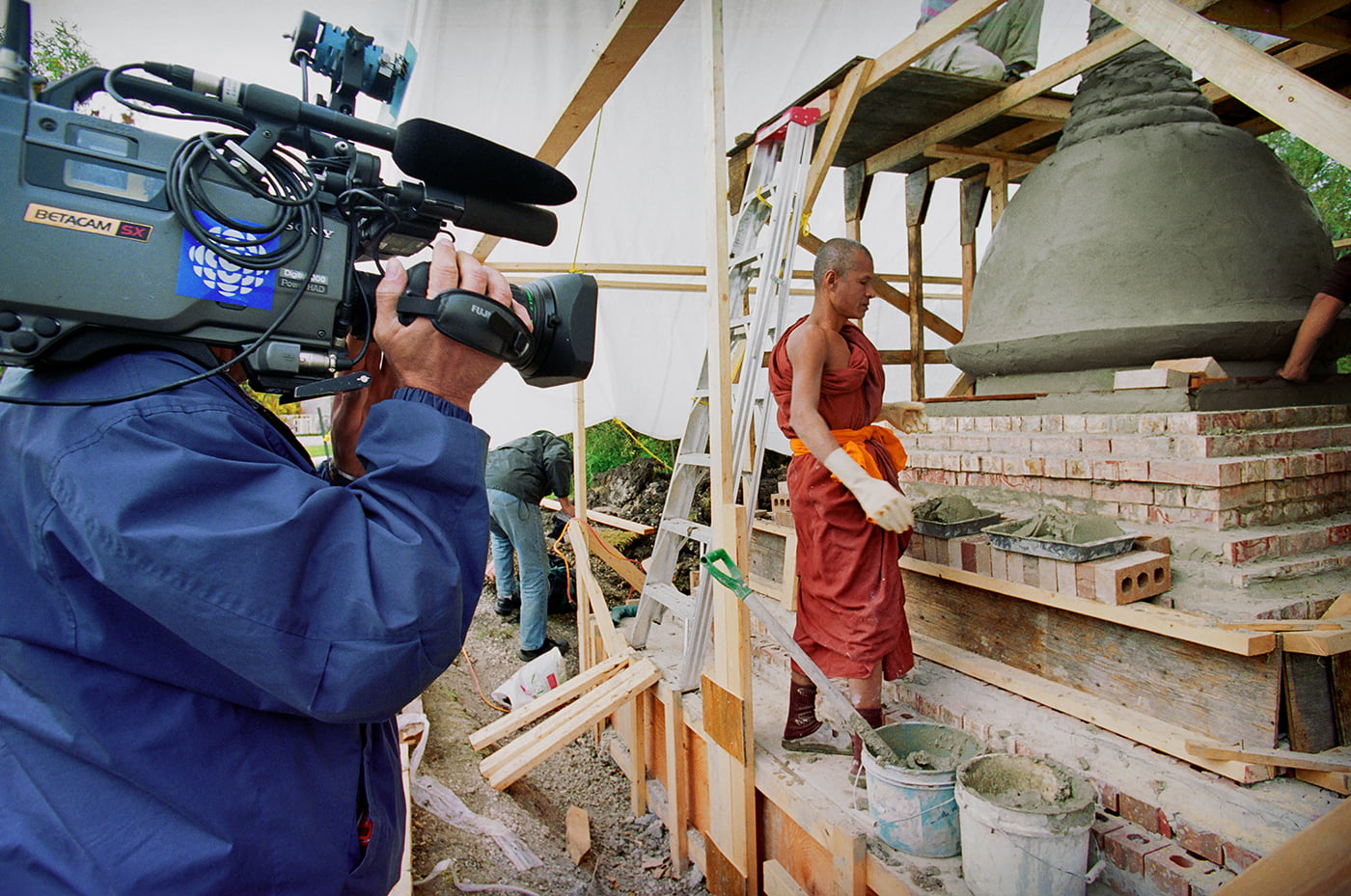How to Build a Pagoda
Gerry Kopelow
I have a lot of respect and affection for my meditation teacher because over a period of twenty five years he helped me establish and maintain a wholesome, resilient state of mind. My teacher, a westerner, found his first teacher fifty years ago in Burma. When I heard last fall that my teacher’s teacher, now ninety-four years of age, was traveling to North America on a special mission, I decided to get involved if I could.
Sayadaw U Thile Wunta likes to build pagodas, those spiky, conical structures that populate the landscapes of Buddhist countries. (Sayadaw is an honorific for an especially learned abbot at a Buddhist monastery.) These structures are said to be collectors and radiators of elevated consciousness, and the Saydaw comes out of his forest retreat every decade or so because he wants to build a pagoda in every country in the world.
To say that the Sayadaw actually builds pagodas is somewhat inaccurate. This I found out after I secured the support of my Winnipeg meditation group, and made a formal offer to help build one here. Sayadaw sent out an English-speaking monk to evaluate our situation, and once our sincerity was ascertained and a lovely site located at the St. Norbert Arts and Cultural Centre, we were set to begin the work.
The fun began when we tried to find out from the Sayadaw, who was due to arrive within a week, what was required in terms of preparations and materials. We were politely stonewalled. Officially, the Sayadaw spoke only Burmese, and translation over the phone was, to say the least, inefficient. A simple sketch was forwarded, and from this we determined that the foundation was to be 12ft square at the base, and the pagoda itself was to made of solid bricks and cement. But how high and how big in diameter? This was not forthcoming. In self defence, we obtained the advice of a structural engineer and built a super-solid steel reinforced foundation, with piles and provisions for good drainage.
So we were prepared, but for what exactly we didn’t know.
At first the volunteer force consisted only of my group of about twenty meditators, but as the word spread through the media that a real Burmese Sayadaw, and three builder monks where in the city working on a real Pagoda, literally hundreds of people, mostly ethnic Buddhists form Sri Lanka, Laos, Burma, Thailand, and Viet Nam came enthusiastically forward to assist with money and labour and mountains of provisions for the monks and workers.
It fell to me to be the project manager, coordinating the flow of supplies and labour, and running up an $800 cell phone bill in the two weeks it took to do the job. My task was not easy, since the seeming reticence of the Sayadaw to provide specific details about the exact size and mechanical nature what we were building continued throughout the whole construction period. Orders for more cement, bricks, mortar, sand, and steel were issued only hours and sometimes minutes before they were needed. The proposed size of the pagoda was initially twelve feet but grew daily to a final figure of twenty-two feet.
At first I assumed the haphazard planning was the result of a cultural mismatch, a collision between third-world laissez-faire slackness and first world, goal-oriented get-up-and-go. But over several days of observation, I realized that this was an incorrect view. The monks, who ate only two meals a day and wore only simple robes, worked steadily and continuously regardless of the weather or the presence or absence of volunteer helpers. They were totally consistent, patient, energetic, and cheerful in every circumstance. They asked for what they need when they needed it, confident that what was needed would materialize at the appropriate moment. And I eventually realized that my urgent cell phone requests to various contractors and suppliers around the city were regularly being met with unsolicited discounts, donations, and instantaneous services which in ordinary circumstances would not have been forthcoming. The Sayadaw, who had spent fifty years meditating at the foot of a tree in the forest, presided over all the activity in quiet dignity, while small children and animals and flocks of grinning people competed with each other to sit at his feet .
The Sayadaw, more or less without spoken instructions, had organized the construction of the Pagoda to be a two week lesson in mindfulness, in conscious living, in harmonious action for a wholesome purpose. The Pagoda is a reminder of the metta – the loving kindness – radiating into the world from those compassionate beings, like the Sayadaw, who have devoted their lives to the alleviation of suffering.


